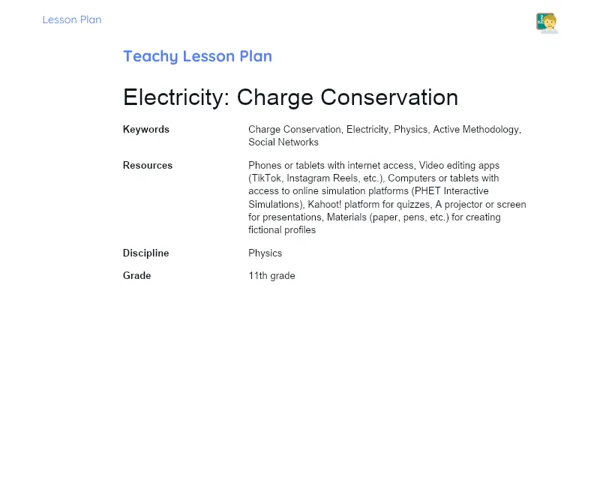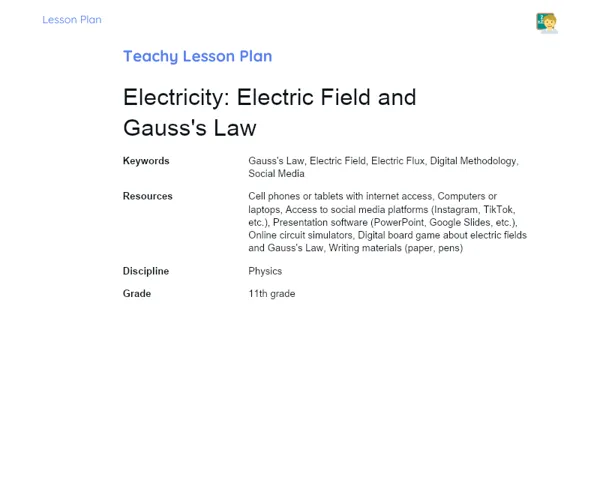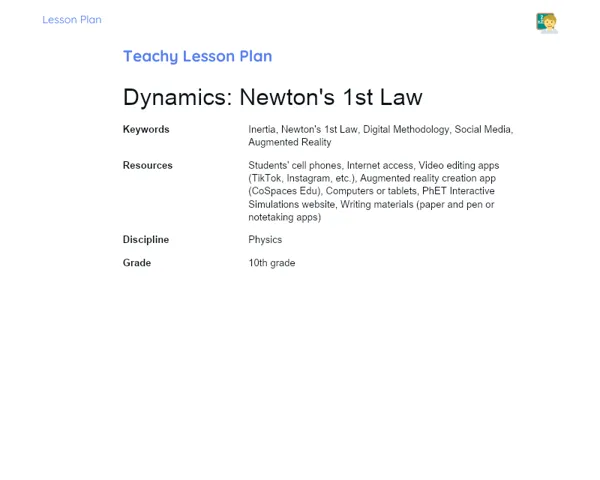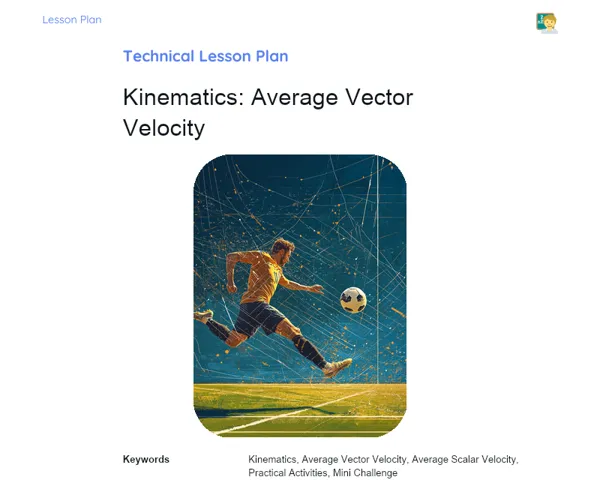Lesson Plan | Lesson Plan Tradisional | Order of Magnitude
| Keywords | Order of Magnitude, Estimation, Physics, High School, Power of 10, Number Comparison, Calculations, Practical Examples, Everyday Applications, Astronomical Distances, Number of Steps, Expository Lesson |
| Resources | Whiteboard, Markers for whiteboard, Multimedia projector, Computer or laptop, Presentation slides, Calculators, Notebooks, Pens, Printed exercise sheets |
Objectives
Duration: (10 - 15 minutes)
The aim of this stage of the lesson plan is to ensure that students grasp the concept of order of magnitude and its significance. By outlining clear and specific goals, the teacher guides the students on what they should understand and be capable of doing by the end of the lesson, ensuring a systematic and focused approach to learning.
Objectives Utama:
1. Comprehend the concept of order of magnitude.
2. Learn to estimate the order of magnitude of various physical quantities.
3. Apply the concept of order of magnitude in everyday contexts, such as the number of steps taken during a marathon.
Introduction
Duration: (15 - 20 minutes)
The purpose of this section of the lesson plan is to immerse students in the topic, showcasing practical applications and the relevance of the order of magnitude concept. This approach not only piques students' interest but also aids in grasping how the knowledge will benefit them in real-life situations, promoting retention and practical application of the upcoming content.
Did you know?
Did you know that order of magnitude is used in astronomy to estimate the number of stars in the universe? It’s estimated that there are about 10^22 to 10^24 stars - a figure so immense it's beyond practical handling. In addition, in our everyday lives, understanding order of magnitude can help us roughly estimate how many steps are taken in a marathon or the total number of cells in the human body.
Contextualization
Kick off the lesson by explaining that in subjects like physics, we often encounter numbers that vary greatly in scale. For instance, the distance between atoms in a molecule is measured in angstroms (10^-10 meters), while the distance between stars extends over light-years (about 10^16 meters). The vast range of these measurements highlights the need to use the concept of order of magnitude to simplify calculations and make comparisons. Understanding order of magnitude allows us to conveniently grasp and compare values.
Concepts
Duration: (40 - 50 minutes)
This stage of the lesson is aimed at deepening students' understanding of the order of magnitude concept, offering detailed guidance and real-world examples. By exploring specific topics and questions that necessitate the application of knowledge, this part seeks to solidify learning and enhance students' ability to estimate and utilise orders of magnitude in various scenarios.
Relevant Topics
1. Definition of Order of Magnitude: Clarify that order of magnitude is a method of expressing the scale of a numerical value in terms of powers of 10. If a value is nearer to 10^n than to 10^(n+1), its order of magnitude is defined as 10^n.
2. Importance of Order of Magnitude: Discuss how order of magnitude streamlines the comparison of both large and small numbers, facilitating a better understanding of scales and proportions across various scientific and practical contexts.
3. Estimation of Order of Magnitude: Show how to estimate the order of magnitude for a given number. Use relatable examples, such as the population of a city or the distance from Earth to the Sun, demonstrating how to round to the nearest power of 10.
4. Practical Applications: Illustrate practical scenarios where order of magnitude plays a role. Examples can include the number of particles within a matter sample, the number of cells in the human body, or the total seconds in a year.
To Reinforce Learning
1. Estimate the order of magnitude of the number of grains of sand on a beach with approximately 10^9 grains of sand.
2. If the average distance from the Earth to the Moon is about 384,000 km, what is the order of magnitude of this distance in meters?
3. An average person takes about 5,000 steps a day. Estimate the order of magnitude of the total steps taken in a year.
Feedback
Duration: (20 - 25 minutes)
The aim of this section is to review and cement what students have learned through the lesson, allowing them to validate their answers and appreciate the reasoning behind their estimates of order of magnitude. The discussions and questions promote critical thinking and practical application, ensuring a comprehensive grasp of the material.
Diskusi Concepts
1. Question 1: Estimate the order of magnitude of the number of grains of sand on a beach with approximately 10^9 grains of sand.
Since 10^9 is already a power of 10, the order of magnitude directly is 10^9. 2. Question 2: If the average distance from the Earth to the Moon is about 384,000 km, what is the order of magnitude of this distance in meters?
First, convert this distance to meters: 384,000 km = 3.84 x 10^5 km = 3.84 x 10^8 m. Thus, the order of magnitude is 10^8, because 3.84 is closer to 10^8 than to 10^7. 3. Question 3: An average person takes about 5,000 steps a day. Estimate the order of magnitude of the total steps taken in a year.
To find the total number of steps in a year, multiply 5,000 steps/day by 365 days/year: 5,000 x 365 = 1.825 x 10^6 steps. The order of magnitude here is 10^6, since 1.825 is nearer to 10^6 than to 10^5.
Engaging Students
1. Prompt students: What is the practical significance of being able to estimate order of magnitude in our day-to-day lives? 2. Question: How can order of magnitude aid in simplifying complex calculations in other subjects like chemistry or biology? 3. Encourage students to contemplate other everyday situations where order of magnitude could be applied, such as estimating the number of spectators at a sports event or the number of leaves on a tree. 4. Ask students to recall a situation where they made a quick estimate and how they could incorporate order of magnitude into that. 5. Inquire: How does the concept of order of magnitude manifest in social media, such as estimating views or likes on a viral video?
Conclusion
Duration: (10 - 15 minutes)
This final stage of the lesson plan is designed to recap and solidify the key points discussed throughout the lesson, ensuring students have a clear and thorough grasp of the content. This summary promotes knowledge retention and illustrates the connection between theory and practice, showcasing the topic's relevance to everyday life.
Summary
['Order of magnitude expresses numerical values in powers of 10.', 'It simplifies comparisons between large and small numbers.', 'Estimating order of magnitude involves rounding to the nearest power of 10.', 'Real-world examples include estimating the number of particles in a sample, counting cells in the human body, and calculating total seconds in a year.']
Connection
The lesson bridged the theory of order of magnitude with practical applications through relatable examples, like estimating steps taken during a marathon or comparing astronomical distances, which aids in understanding and applying what was learned.
Theme Relevance
Understanding order of magnitude is essential for simplifying complex calculations and making swift estimates in day-to-day activities. Knowing how to estimate order of magnitude is useful across scientific subjects and in everyday situations, such as figuring the number of fans in a stadium or the number of trees in a park, enhancing the practicality of the knowledge.



